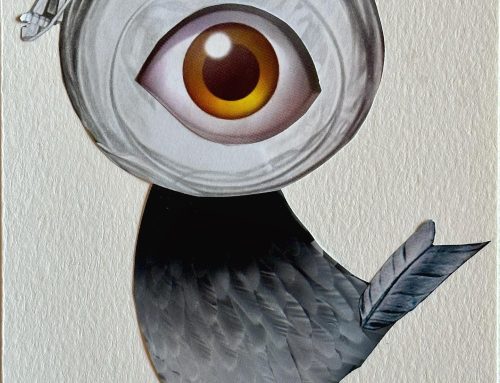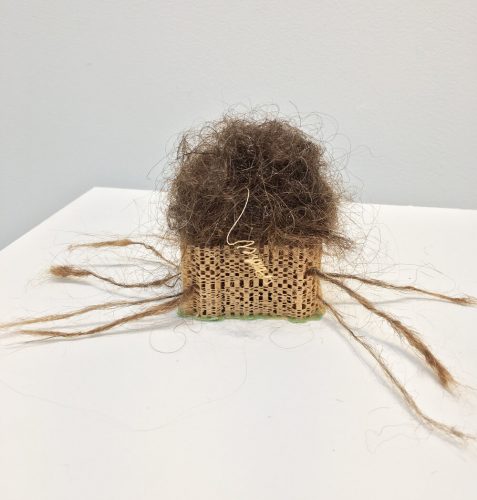
Holobionts 2019 installation view, plus detail. Squirrel hair, cat hair, magnolia petals, leaf skeleton, human hair, 30% wood fibre acrylic, wax, feather, oak tree branch, acorns.
Holobionts are assemblages of different species that form ecological units. Lynn Margulis proposed that any physical association between individuals of different species for significant portions of their life history is a symbiosis. Donna Haraway continued this thought with the term sympoiesis to describe how our lives and the lives of other species intersect.

Holobionts 2019 (right wall) installation view.

Holobionts 2019. Squirrel hair, cat hair, magnolia petals, leaf skeleton, human hair, 30% wood fibre acrylic, wax, seagull feather, oak tree branch, acorns.
Materials
The materials I used for my project included hair gifted to me by six of my friends (Manna, Carolyn, Melissa, Evangeline, Heather, and Hazel) and Melissa’s cat Piper. I was also gifted a small amount of Eastern Grey Squirrel hair. While out walking, I found magnolia petals, two leaf skeletons, a seagull feather, and several oak tree branches, and acorns.
- Holobionts 2019. Installation view.
- Holobionts 2019 (left wall) installation view.
Drop Spindle
One of the first tools I purchased to work with was a drop spindle. I wanted to know if I could make a fine thread from spinning human hair. I discovered that each person’s hair would turn differently. In some instances, the hair would wind and unwind back and forth many times. In other cases, the person’s hair would spin tightly or snap off right away.
Collecting Hair
During the process, I found myself explaining to people how I collected my hair, or how the other participants collected their hair, and it inspired me to make a video. Several years ago, I became curious as to what it would be like to be a squirrel, and have fur on my face. Subsequently, I started saving my hair that would come out on the days I wash my hair in the shower. This type of hair loss is standard, and you can lose between 50-100 hairs a day. After each wash, I would roll the strands that came loose between my fingers into individual hairballs. I planned to use my human hair as a material to build a 3D project.
3D Printer Collaboration
I had initially intended on creating 3D printed squirrel teeth. But a conceptual idea sprang forward instead. I was interested in the concept of weaving human and non-human hair together, but I also wanted to collaborate with technology. After being introduced to the 3D printing lab, I was most interested in what is called breakaway material. This material is used to support an architectural overhang in a 3D printed piece. It is much more fibrous than regular acrylic plastic as it is intended to be “broken away.” For this project, I selected a 30% wood grade acrylic in keeping with the other wood materials in my pieces, such as acorns and oak branches. My photograph of a leaf skeleton at VanDusen Botanical Garden served as the basis of the print job. I imported the photo of the leaf skeleton into the 3D software Rhinocerous (with Logan’s help, Lab Tech), and dissected a portion of the leaf to 3D print. While the Ditto Pro 3D printer arm worked to build the unit, I laid down spun human and squirrel hair. The print head braided over the top while I held the hair down in place. With this method, I was able to collaborate with the 3D printer and weave these materials together.
Becoming Animal
Through my process, I was playing with the magnolia petals and tying them with hair. I thought they looked like fingers and started to paint with them one “petal finger” at a time. It wasn’t until I tied five magnolia petals to my fingers with hair that things got interesting.
Gallery of work in progress

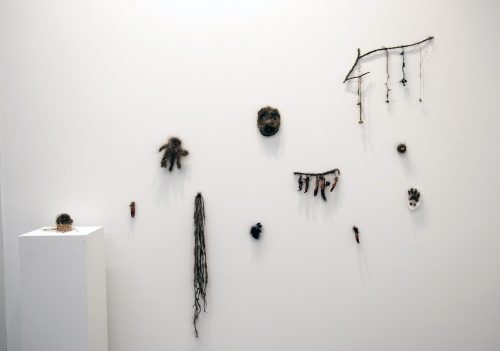
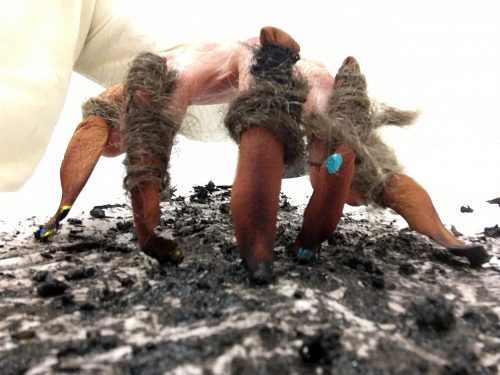
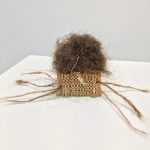
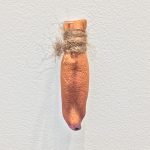
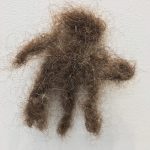
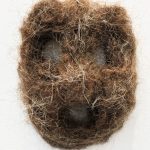
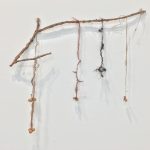
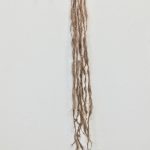
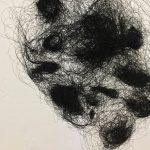
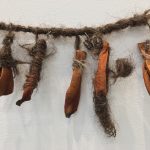
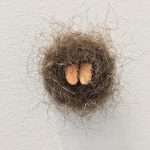
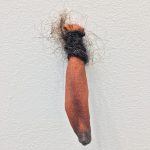
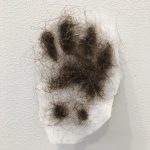
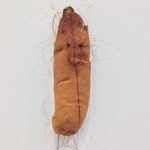
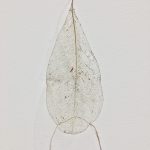
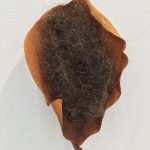
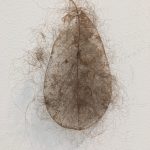
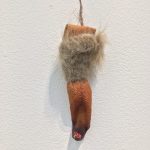
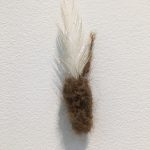
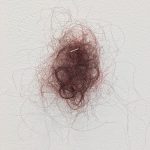
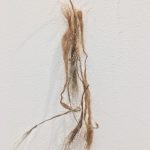
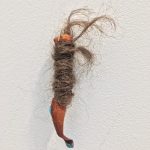
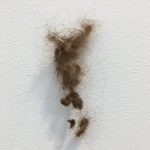
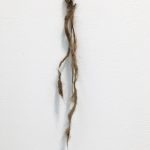
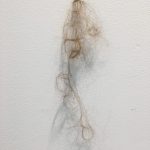
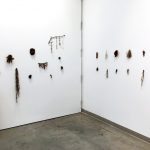
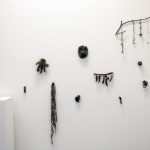
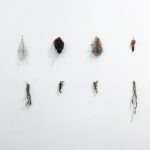
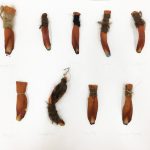
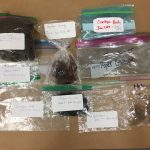
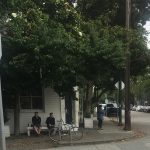
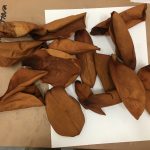
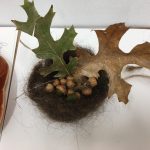
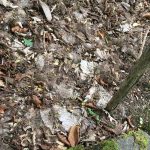
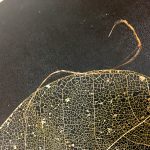
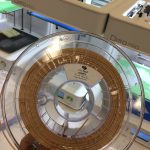
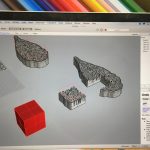
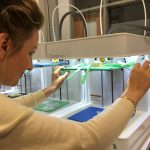
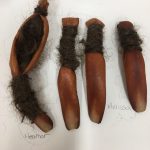
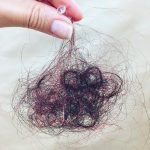
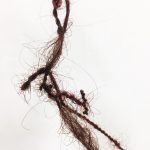
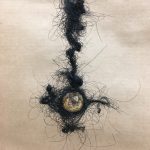
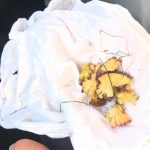
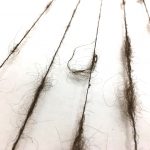
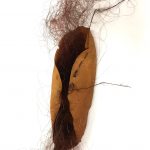
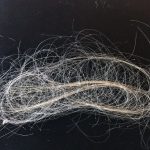
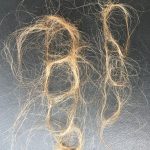
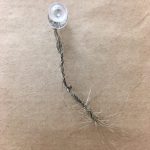
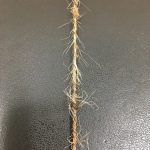
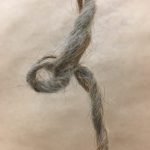
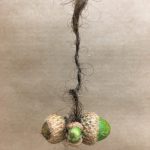
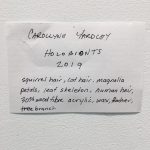
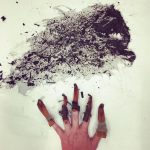
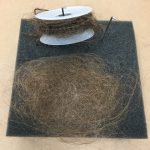
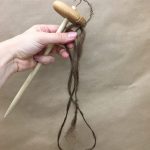
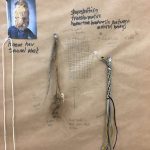
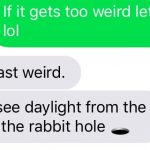
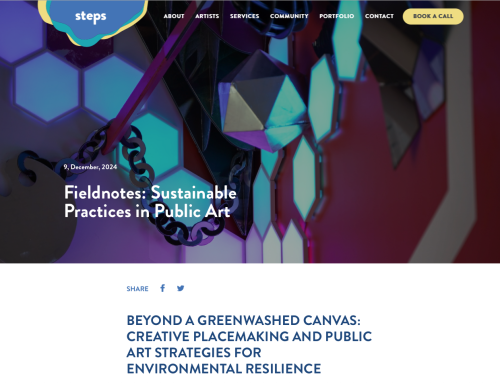
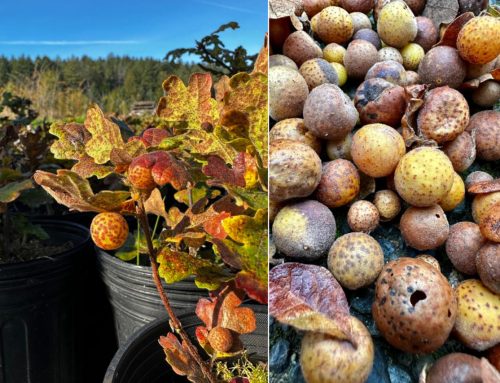

![Squirrealism: Psychometry (IIC) in artistic practice. [Online presentation] International Multispecies Methods Research Symposium, University of Saskatchewan, Saskatoon, Canada.](https://www.carollyne.com/wp-content/uploads/2023/06/Screen-Shot-2023-06-18-at-9.16.32-PM-copy-1-500x383.jpg)
